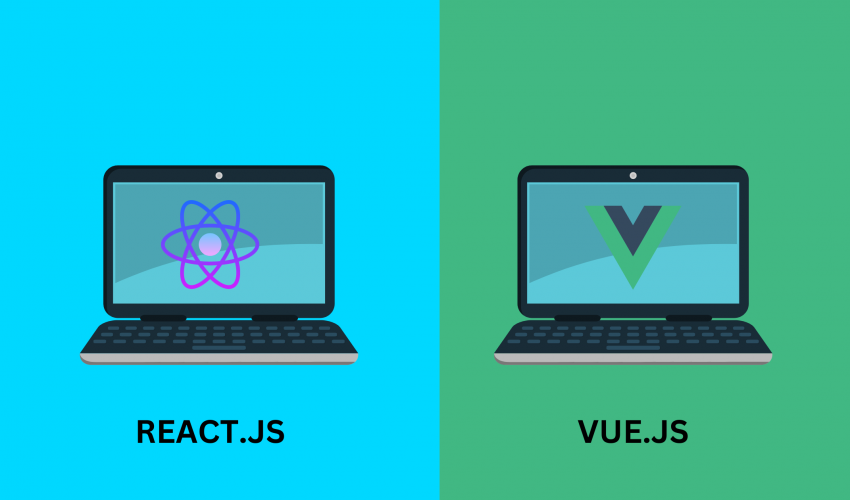Understanding tech terms could be tricky, especially for those on the outside looking in. But people looking for Reactjs development services are often not entirely in the know-how. Founders or entrepreneurs who are not necessarily from a technical background might find it difficult to understand the nuances that make a technology or tool different from another. A good example of this confusion and vagueness can be seen in the case of ReactJS and React Native.
As both have React in their names, people often refer to them interchangeably without recognizing the crucial differences. Hence, in simple terms, we are explaining those differences to you in this blog. Let’s dive in.
What are React and React Native?
Before diving into the differences between these technologies, let’s first understand what they are.
React
React is a popular open-source JavaScript library used for building user interfaces. The library was first released by Facebook in 2013 and has since gained widespread adoption among developers due to its ease of use, flexibility, and performance.
React Native
React Native is a popular open-source framework that allows developers to build cross-platform mobile applications using the same syntax and components as React. React Native is primarily used by developers to create native mobile applications. But the most exciting part about the apps built using React Native is that even with a single codebase these apps are operable on both Android and iOS platforms. As a result, use of React Native massively reduces both the development time as well as the costs involved.
Now that you have a basic understanding of these technologies, let’s understand what purpose they serve for developers.
The Purpose and Functionality of React
At its core, React is all about creating reusable UI components that can be combined to build complex user interfaces. These components are built using a syntax called JSX, which allows developers to write HTML-like code that can be rendered to the browser.

React uses a virtual DOM (Document Object Model), which means it can efficiently update the UI without re-rendering the entire page. It leads to the following:
- Faster load times
- Better performance
- And an improved user experience.
In addition to its core functionality for building user interfaces, React also has a vast ecosystem of third-party libraries and tools that can be used to extend its capabilities. These include tools for state management, routing, testing, and more.
The Purpose and Functionality of React Native
React Native provides a set of pre-built components that can be used to build user interfaces, which are rendered natively on the device, resulting in a high-performance mobile application. It also offers access to the native APIs of the device, allowing developers to integrate device-specific features like camera, GPS, and more.

The core functionality of React Native is to bridge the gap between the React code and the native platform code. It enables the communication between JavaScript and the native platform code, making it possible to render the user interface using the native platform components. This approach provides a more responsive and smoother experience for the end user.
Key Differences Between React and React Native
Now that we have covered the basic meaning, purpose, and functionalities of both technologies, let us dissect the key ways these two differ.

1. Development Environment
React is primarily used for developing web applications, and the development environment includes tools such as React Developer Tools and Redux DevTools. React Native, on the other hand, is used for developing native mobile applications and requires different development environments depending on the platform (Android or iOS).
2. User Interface (UI) Components
React uses HTML and CSS to create UI components for web applications. React Native, on the other hand, uses platform-specific components that are rendered to native views on Android and iOS devices.
3. Performance
React is optimized for web performance and can easily render complex user interfaces. React Native, while still performing well, can sometimes experience performance issues due to the added abstraction layer between the code and the native platform.
4. Code Reusability
One of the main advantages of using React is code reusability. Components can be reused across different application parts, making development faster and more efficient. React Native also allows for some code reuse, but it is not as extensive as React due to the differences in the development environment and UI components.
Use Cases for React
Some common use cases for React include building the following:
● Single-page applications:
With its ability to handle complex and dynamic UI components, React is ideal for developing single-page applications that provide a seamless user experience without needing page refreshes.
● E-commerce websites:
React is also well-suited for building e-commerce websites, where users must interact with various product information, reviews, and recommendations. Using React, developers can create highly interactive and intuitive interfaces that enhance the user experience and increase conversion rates.

● Social media platforms:
Social media platforms require real-time data updates and user interaction. Hence, React is an excellent choice for building social media platforms. Its ability to handle dynamic content and seamless page transitions makes it ideal for social media applications.
● Web-based games:
React is also used for building web-based games requiring highly responsive and dynamic user interfaces. React’s virtual DOM and component-based architecture make it a perfect fit for game development.
In addition to these use cases, React is also used for creating reusable UI components, which can help streamline the development process and improve code maintainability. Using pre-built components, developers can focus on building core application features and save time in the development process. Moreover, React can be integrated with other popular libraries and frameworks, such as Redux and React Router, to enhance its functionality and provide additional features.
Use Cases for React Native
React Native is a popular framework for building native mobile applications. Some of the key use cases for React Native include:
● Cross-platform mobile app development:
React Native allows developers to build apps for both iOS and Android platforms using a single codebase, making it a cost-effective solution for businesses.
● Rapid prototyping:
With its pre-built components and hot-reloading feature, React Native enables developers to quickly build and test app prototypes, saving time and resources in the app development process.
● Complex and interactive mobile apps:
React Native’s powerful and flexible UI components and ability to render natively make it an ideal choice for building complex and interactive mobile apps.
● Hybrid app development:
For businesses that already have a web app built with React, React Native can be used to create a hybrid app that can be easily deployed to both web and mobile platforms.

Pros and Cons of React and React Native
Below is a brief run-through of the pros and cons of both React and React Native to give you a holistic understanding of their differences at a glance.
Pros and Cons of React
| Pros | Cons |
| Easy to learn and use | The steep learning curve for beginners |
| High performance | Requires familiarity with JavaScript and its ecosystem |
| Component-based structure promotes code reusability | Limited support for native features |
| Large and active community support | Requires additional tools for building complete applications |
| It can be used for both web and mobile app development | Relatively steep learning curve compared to other front-end libraries. |
| Offers better SEO capabilities compared to React Native | Requires developers to write more boilerplate code compared to other libraries. |
Pros and Cons of React Native
| Pros | Cons |
| Enables cross-platform mobile app development with a single codebase | Limited third-party library support compared to React |
| Provides access to native features and APIs | Reliance on Facebook’s maintenance and updates |
| Faster development and deployment times compared to traditional native app development | It may require additional setup and configuration for certain platforms |
| Code reusability saves time and effort | Performance may be slower compared to traditional native app development |
| High-performance and smooth user experience | Limited access to device features and APIs compared to native app development |
Considering these pros and cons is important when deciding whether to use React or React Native for your project.
That brings us to the factors you should consider when choosing between these technologies. Let’s take a look at all the relevant factors that you must take into account.
Which one to choose: React or React Native?
When choosing between React and React Native, there is no one-size-fits-all answer. It ultimately depends on the specific needs and requirements of your project. However, here are some factors to consider:
Type of Application:
If you are building a web application, React would be a better choice. If you are building a mobile application, React Native would be a better choice.
User Interface:
If you need a highly customized and complex user interface, React may be a better choice. React Native, on the other hand, provides a more native feel and look for mobile applications.
Development Team:
If your development team is experienced in web development, they may find it easier to work with React. If your development team is more experienced in mobile development, they may find it easier to work with React Native.
Time and Budget:
React can be a quicker and more cost-effective option for building web applications, while React Native can be quicker and more cost-effective for building mobile applications.
Conclusion: Which one is better for your project?
In summary, the decision to choose between React Native or ReactJS development services should be dependent on what specific requirements you have and what would best fit your project requisites. Hopefully, you find this blog helpful in parsing out what both these technologies are good at and the areas where they lack. With a sound understanding of both technologies’ strengths and limitations, you can arrive at the right choice for your project. Consider the abovementioned factors, and choose the framework that best suits your project’s needs.







Related posts